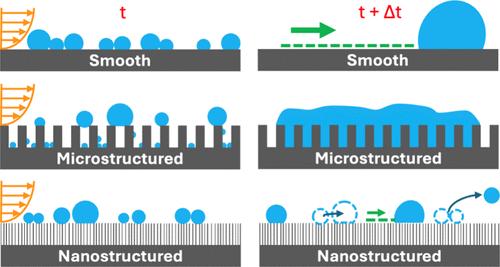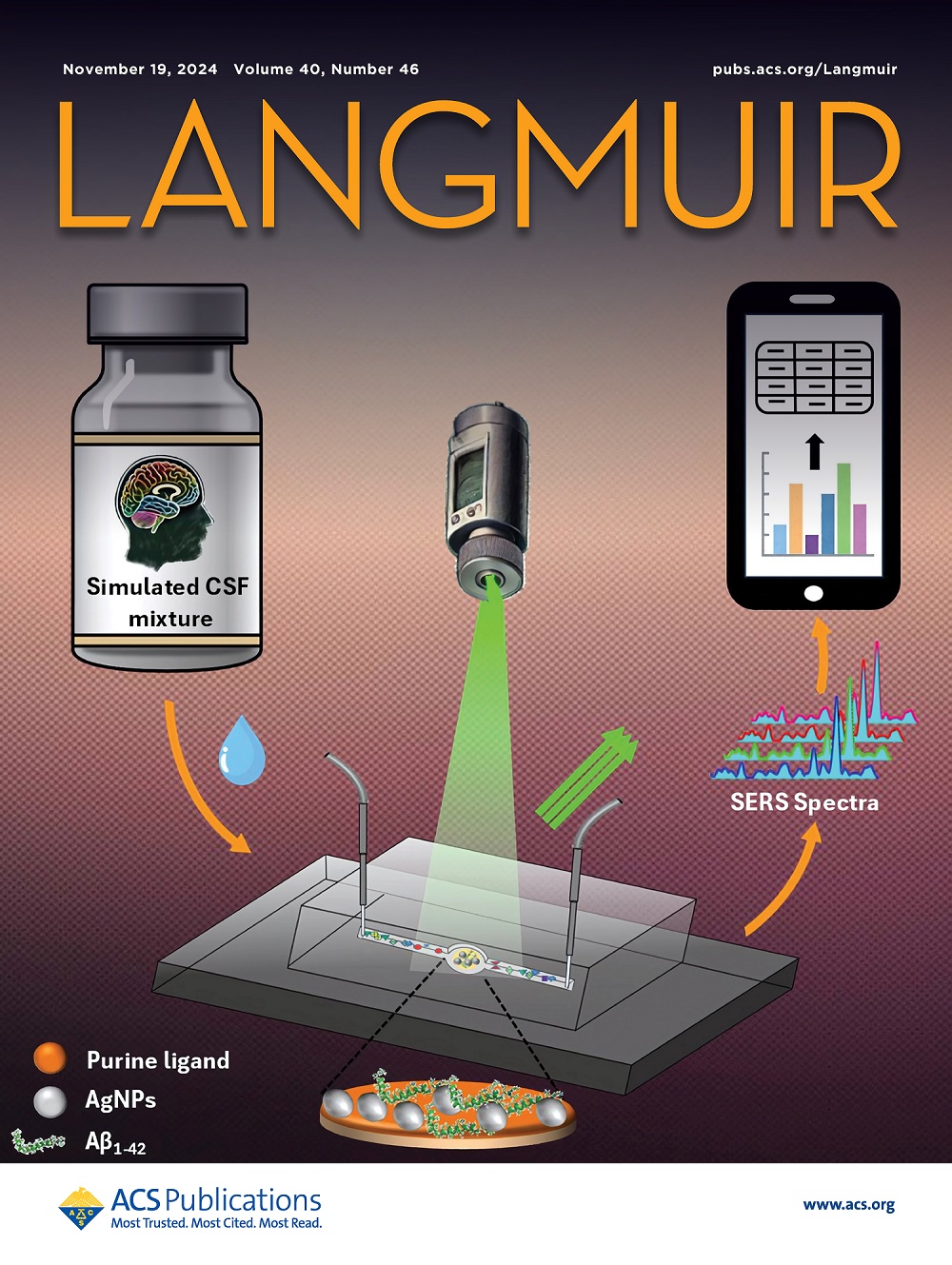Drop Dynamics during Condensation on Superhydrophobic Surfaces in Vapor Shear Flow
IF 3.7
2区 化学
Q2 CHEMISTRY, MULTIDISCIPLINARY
引用次数: 0
Abstract
Accurate models for predicting drop dynamics, such as maximum drop departure sizes, are crucial for estimating heat transfer rates during condensation on superhydrophobic (SH) surfaces. Previous studies have focused on examining the heat transfer rates for SH surfaces under the influence of gravity or vapor flowing over the surface. This study investigates the impact of surface solid fraction and texture scale on drop mobility in a condensing environment with a humid air flow. Experiments recorded condensation with varying surface feature sizes from micro- to nano scale under different flow rates. Video analysis detected the drop-size distribution and maximum drop departure sizes. Particle image velocimetry (PIV) provided accurate shear force representations. Results showed that the maximum drop departure sizes decreased with lower surface solid fractions and higher flow rates. A force balance analysis revealed that coalescence-induced drop jumping aids drop departure. Different drop behaviors due to coalescence were linked to surface characteristics. The study quantified drop jump distances under shear force during condensation on SH surfaces, and found that jump distances increased when coalescing drop sizes were similar. Based on these findings, a method for tuning SH surfaces to control drop size at coalescence and departure was suggested. Drop mobility was measured in terms of Bond and Capillary numbers, showing a dependence on surface solid fraction and pitch size. By combining these into surface slip length, it was shown that drop mobility increases with increasing slip length.

求助全文
约1分钟内获得全文
求助全文
来源期刊

Langmuir
化学-材料科学:综合
CiteScore
6.50
自引率
10.30%
发文量
1464
审稿时长
2.1 months
期刊介绍:
Langmuir is an interdisciplinary journal publishing articles in the following subject categories:
Colloids: surfactants and self-assembly, dispersions, emulsions, foams
Interfaces: adsorption, reactions, films, forces
Biological Interfaces: biocolloids, biomolecular and biomimetic materials
Materials: nano- and mesostructured materials, polymers, gels, liquid crystals
Electrochemistry: interfacial charge transfer, charge transport, electrocatalysis, electrokinetic phenomena, bioelectrochemistry
Devices and Applications: sensors, fluidics, patterning, catalysis, photonic crystals
However, when high-impact, original work is submitted that does not fit within the above categories, decisions to accept or decline such papers will be based on one criteria: What Would Irving Do?
Langmuir ranks #2 in citations out of 136 journals in the category of Physical Chemistry with 113,157 total citations. The journal received an Impact Factor of 4.384*.
This journal is also indexed in the categories of Materials Science (ranked #1) and Multidisciplinary Chemistry (ranked #5).
 求助内容:
求助内容: 应助结果提醒方式:
应助结果提醒方式:


